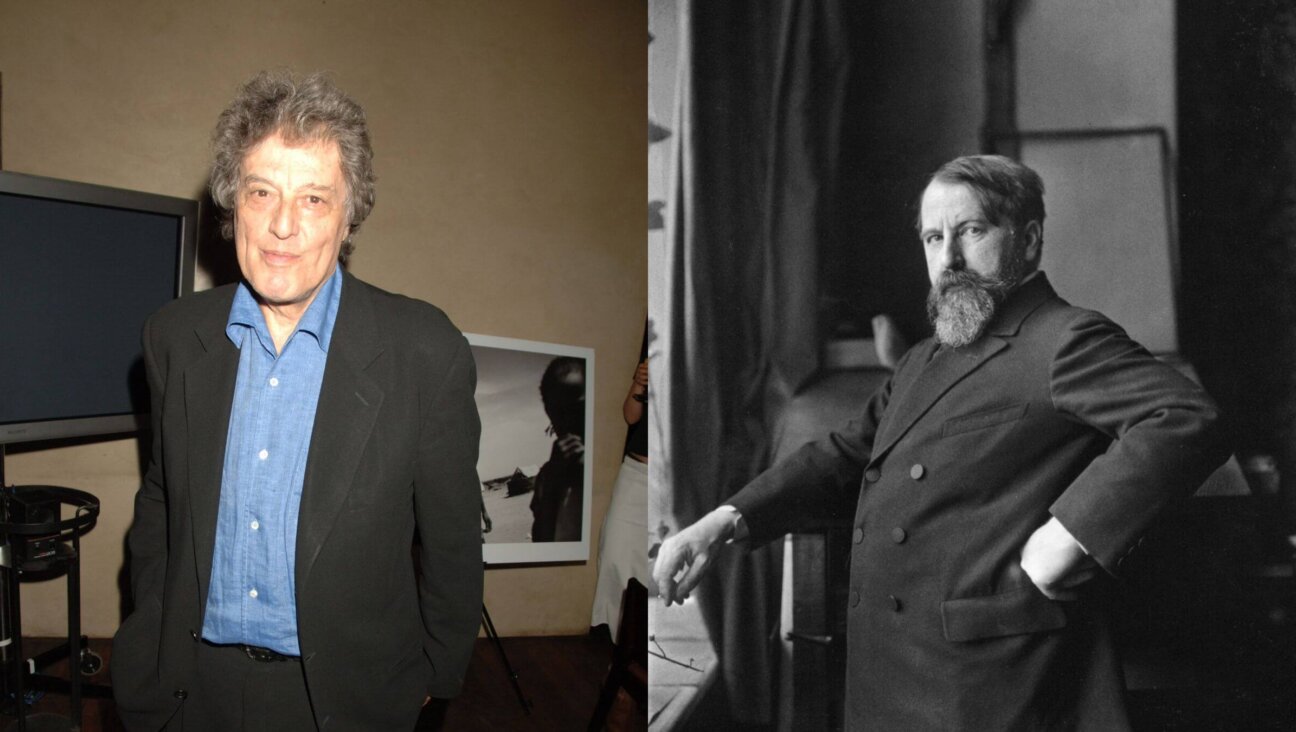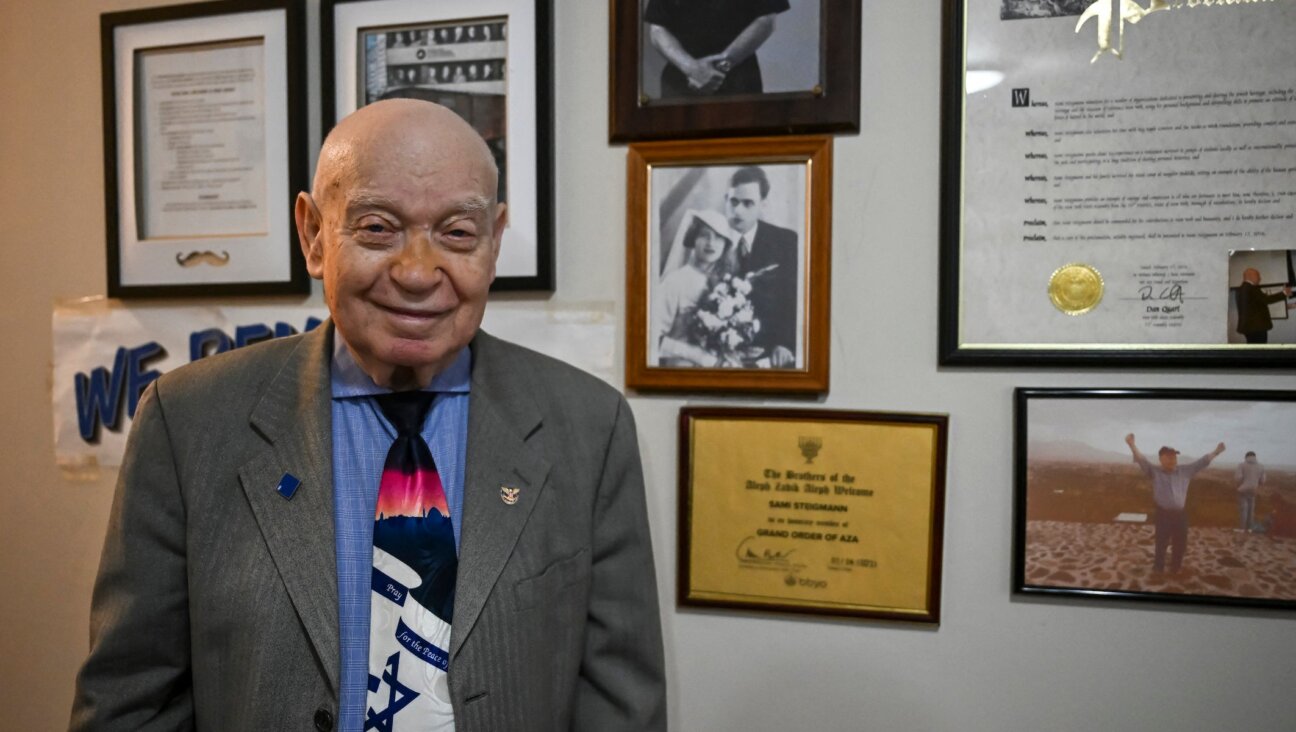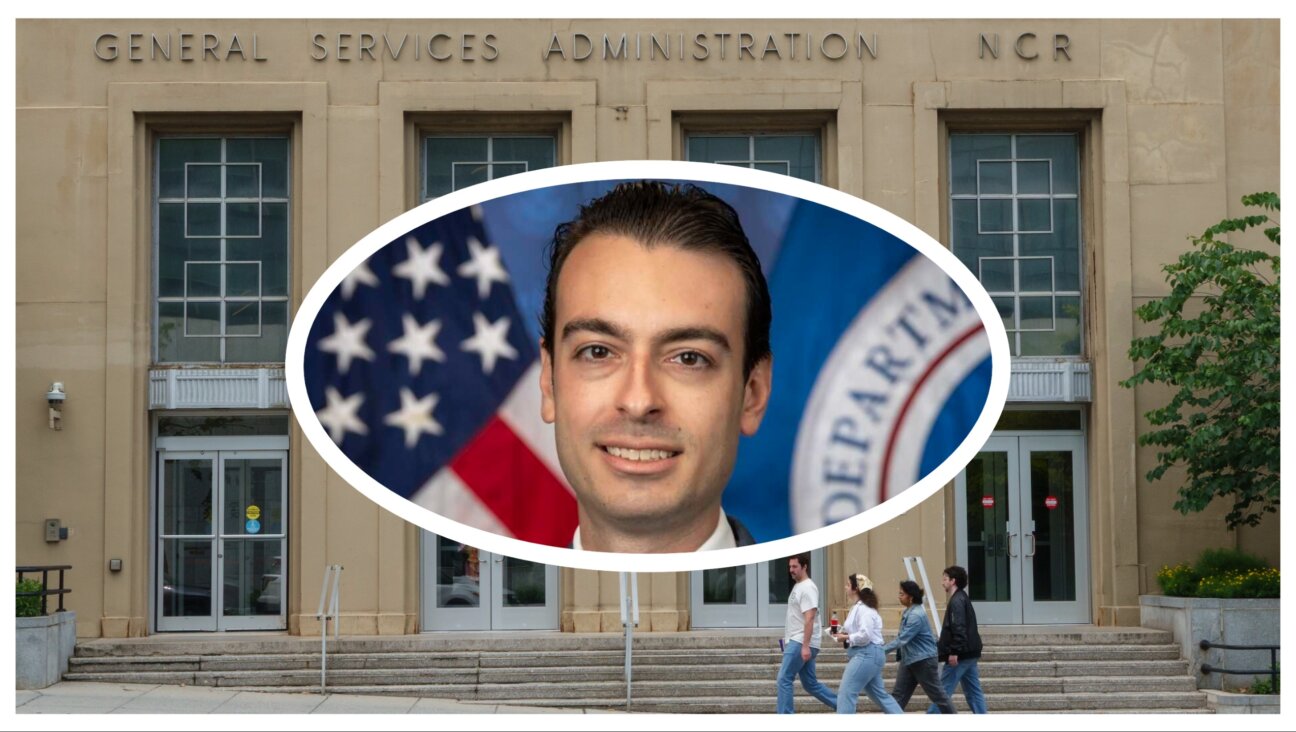Supreme Jewish Achievement

Graphic by Angelie Zaslavsky
Louis D. Brandeis: A Life
By Melvin I. Urofsky
Pantheon Books, 976 pages, $40.00.

Legal Eagle: Brandeis blazed a trail. Image by GETTY IMAGES
Louis Brandeis was the Jewish Barack Obama. Or, if not, perhaps the legal Henry Kissinger. Perhaps smarter (graduating from Harvard Law School with the highest GPA on record) but less political, he was the golden boy of the judiciary and the first Jew to sit on the U.S. Supreme Court.
His biographer, Melvin I. Urofsky, is a professor of law and public policy and professor emeritus of history at Virginia Commonwealth University. His accomplishments include editing (with David W. Levy) the seven-volume collection of “Letters of Louis D. Brandeis” and writing extensively on law, Zionism, and the relationship between American Jewry and Israel. In this new, almost 1,000 page book, Urofsky attempts to present to us a fully realized portrait of Brandeis, using newly-available materials and family papers.
Urofsky takes us on a chronological journey through Brandeis’s life. We travel with him through his boyhood in Louisville, Ky., to his attendance at Harvard. We watch him set up his law practice in Boston. We observe his courtship with his wife, Alice, who would become the mother of his two daughters, and we observe his growing immersion in a host of progressive causes. Urofsky guides us through Brandeis’s nomination to the Supreme Court and his incredibly successful tenure there, which lasted 23 years until his retirement in 1939 at 83, two years before his death.
The reader quickly becomes impressed with Urofsky’s skills as a biographer. He clearly admires Brandeis, but is not afraid of him. Despite the fact that Brandeis was intensely private and left no personal diaries or journals to probe, Urofsky is able to make us feel as if we are in Brandeis’s presence. It is also not difficult to understand Urofsky’s attraction to Brandeis. The men seem at times to be mirror images of each other — patient, thorough, intellectual and averse to all types of extreme thought or behavior.
Brandeis wanted to make meaningful changes in the world and bring it closer to how he felt it ought to be. Whether the subject was worker’s rights or women’s rights, the legitimization of unions or life insurance fraud, he always brought to the table his innate sense of fairness and idealism. He had little interest in material wealth, except for the freedom it offered him to pursue altruistic endeavors. He once told his niece that “ideals are everything,” and claimed that his guiding principle in all affairs was to always maintain “a general calm toward every situation.”
The carefully constructed self-com-posure Brandeis maintained certainly must have masked an anger he felt at the slights hurled upon him because of his Jewish origin. Urofsky reveals that when his law partner, Samuel Warren, was to be wed, Brandeis was not invited, since Warren’s future bride refused to have a Jew attend her wedding. When Brandeis served on the Supreme Court, his fellow justice James Clark McReynolds refused to sit with him or to be photographed with him; he also wouldn’t listen to him address the court, choosing instead to leave the courtroom when Brandeis spoke. Yet, Urofsky is unable to find any written communication by Brandeis that expresses irritation at these or other brazen insults he must have endured.
This biography makes the case that what made Brandeis such a spectacular lawyer was the revolutionary approach he brought to his work. He embraced the new school of thought that emphasized a sociological jurisprudence that encouraged the courts to take into account the widespread changes occurring throughout society. Like his contemporary Oliver Wendell Holmes, he fought against the narrowness and formalism of classical legal thought and felt the law must reflect the genuine experiences of the people.
Brandeis is recognized as one of the most influential Supreme Court justices, remembered primarily for having developed the contemporary jurisprudence for free speech and for having provided the foundation for a constitutionally protected right to privacy. He also developed the doctrine of incorporation by which the Bill of Rights came to apply to the states. But it was his famous “Brandeis briefs” that transformed the way judges expressed themselves. In these briefs, Brandeis would put forth his argument but also include a complete array of facts from various sources that surrounded a controversy and demonstrate why this additional supporting evidence was crucial to the eventual legal decision.
The procedure would transform bulwark legislation of both gender and racial equality. For example, in Muller v Oregon, he presented 113 pages with only two pages devoted to the law. The rest of the brief was a compilation of factory reports and medical testimony from various experts who supported his argument that women should not be made to work longer than 10 hours a day in a manufacturing environment, since they
were physically different from men. He included evidence that linked a woman’s failing health to the deterioration of her children’s health and to the well-being of the entire family.
Urofsky explains how this approach radicalized the way cases were presented, and he reminds us that in 1954, the National Association for the Advancement of Colored People filed a brief that was similarly short on legal precedent, but filled with materials relating to the harm done by segregation to the minds and hearts of black children.
Those who witnessed Brandeis in action found him spellbinding. Urofsky cites two descriptions that indicate a man of extraordinary presence. His Harvard classmate William E. Cushing wrote:
“My friend Brandeis is a character in a way — one of the most brilliant legal minds they have ever had here. He has a rather foreign look and is currently believed to have some Jew blood in him, though you would not suppose it from his appearance — tall, well-made, beardless, and with the brightest eyes I ever saw. The professors listen to his opinion with the greatest deference. And it is generally correct.”
Journalist Ray Stannard Baker, who heard him argue as a Supreme Court justice, describes Brandeis’s majesty:
I remember his whole bearing. His large head with the stubborn black hair streaked with iron-gray (he was then 54 years old) — the striking, dark, strong face, the sensitive hands — gave one singularly an impression of originality and power. His face, indeed, at certain angles, and especially in repose, recalls almost startlingly one of the portraits of Abraham Lincoln. It is one of those rare, and indeed scarcely classifiable faces — although Jewish, not typically Jewish, although American, not typically American — in which the qualities of strength of character, side by side with keenness, sensitiveness, depth of vision, and even, at times, a kind of sad mysticism, are extraordinarily mingled. Rising in any gathering, stepping forth on any platform, he would instantly command, even from his bitterest enemies, an acknowledgement of force, originality, personality. Here is a man of power.
Brandeis took the reins of the fractured American Zionist movement in 1914 and held the post for four years. He managed to increase membership, raise money, set goals and, most important, recast Zionism so that it was appealing to Jews already in America. Urofsky theorizes that Brandeis, who was a completely nonreligious, nonpracticing Jew without an ounce of Yiddishkeit, was drawn to the idea of a homeland in Palestine by his own idealized fantasy that it might become a more perfected version of America, which he felt was already becoming tarnished by mass consumerism, monopolies, powerful corporations and corruption. Brandeis told a reporter in 1911, “My sympathy with the Zionist movement rests primarily upon the noble idealism which underlies it….”
His own family had been living in America since 1850, after arriving from Prague. His father quickly became successful in several different business ventures. Louis always admired his father’s tenaciousness and ingenuity, and watching his father succeed in America formed the basis for much of his later judicial and political philosophy, which emphasized the importance of allowing men the opportunity to achieve their potential unencumbered by the trappings of government, whether in America or Israel.
When one reflects upon the timing of Brandeis’s career and his larger-than-life scope of accomplishments and raw talents, it is agonizing but almost impossible not to contemplate what might have happened, or what might not have happened, in Europe if only Brandeis had decided to thrust the full force of his powers and intellect upon the increasing dangers facing the Jews — if the Jewish people’s security, and only that, had become his sacred mission.
What if he had been less courteous and less restrained? What if instead of turning his cheek when confronted with antisemitic insults, he had become enraged with a desire for revenge? What if instead of courting the favor of presidents and politicians, he had used his authority to force them to hear his pleas? What if underneath his mild-mannered demeanor there had lain a statesman, a Moses, waiting to come out and lead his people to Israel or even to America? What if?
Elaine Margolin is a freelance book reviewer and essayist for The Jerusalem Post, the San Francisco Chronicle and others.















